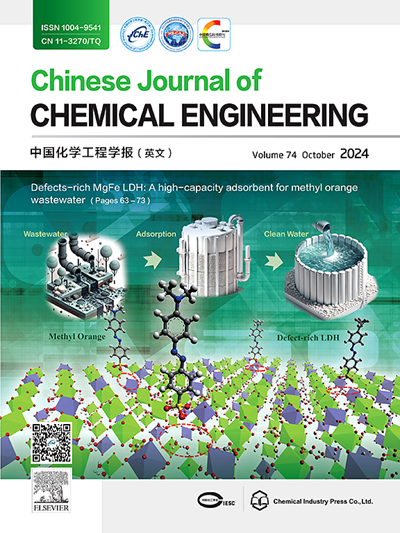Study on purification process of electronic-rade cerium ammonium nitrate through crystallization
IF 3.7
3区 工程技术
Q2 ENGINEERING, CHEMICAL
引用次数: 0
Abstract
The purity of electronic-grade chemicals significantly impacts electronic components. Although crystallization has been used to purify cerium ammonium nitrate (CAN), the impurity removal mechanism underlying different crystallization parameters remains unclear. Traditional analytical methods of inductively coupled plasma mass spectrometry (ICP-MS) have problems in detecting trace Fe accurately, because of the high concentration of Ce and interference of polyatomic ions. Therefore, this study developed a new method integrating the standard addition and internal standard methods and explored the role of the kinetic energy discrimination mode. This new approach effectively overcomes Ce-related matrix interference and fills the gap in ultra-trace impurity detection. Furthermore, the study investigated the effects of cooling rate, seed mass loading and seed size on the removal of Fe impurity. The seed mass loading affects the average crystal size through regulating secondary nucleation and crystal growth. The removal of Fe in CAN is determined by surface adsorption and agglomeration. Under the condition of the cooling rate of 0.2 K·min−1, and addition of 0.5% (mass) 600–680 μm seeds, the Fe content is the lowest, at only 0.24 mg·L−1, and the Fe removal rate reaches 92.28%.
电子级硝酸铈铵结晶提纯工艺研究
电子级化学品的纯度对电子元件有重大影响。虽然结晶法已被用于纯化硝酸铈铵(CAN),但不同结晶参数下的杂质去除机理尚不清楚。传统的电感耦合等离子体质谱(ICP-MS)分析方法由于存在高浓度的Ce和多原子离子的干扰,在准确检测痕量Fe时存在问题。因此,本研究开发了一种结合标准加法和内标法的新方法,并探讨了动能判别模式的作用。该方法有效地克服了ce相关的基体干扰,填补了超痕量杂质检测的空白。此外,研究了冷却速率、种子质量负荷和种子尺寸对铁杂质去除率的影响。种子质量负荷通过调节二次成核和晶体生长来影响晶体的平均尺寸。CAN中铁的去除率是由表面吸附和团聚决定的。在冷却速率为0.2 K·min−1,添加0.5%(质量)600 ~ 680 μm种子的条件下,铁的含量最低,仅为0.24 mg·L−1,铁的去除率达到92.28%。
本文章由计算机程序翻译,如有差异,请以英文原文为准。
求助全文
约1分钟内获得全文
求助全文
来源期刊

Chinese Journal of Chemical Engineering
工程技术-工程:化工
CiteScore
6.60
自引率
5.30%
发文量
4309
审稿时长
31 days
期刊介绍:
The Chinese Journal of Chemical Engineering (Monthly, started in 1982) is the official journal of the Chemical Industry and Engineering Society of China and published by the Chemical Industry Press Co. Ltd. The aim of the journal is to develop the international exchange of scientific and technical information in the field of chemical engineering. It publishes original research papers that cover the major advancements and achievements in chemical engineering in China as well as some articles from overseas contributors.
The topics of journal include chemical engineering, chemical technology, biochemical engineering, energy and environmental engineering and other relevant fields. Papers are published on the basis of their relevance to theoretical research, practical application or potential uses in the industry as Research Papers, Communications, Reviews and Perspectives. Prominent domestic and overseas chemical experts and scholars have been invited to form an International Advisory Board and the Editorial Committee. It enjoys recognition among Chinese academia and industry as a reliable source of information of what is going on in chemical engineering research, both domestic and abroad.
 求助内容:
求助内容: 应助结果提醒方式:
应助结果提醒方式:


